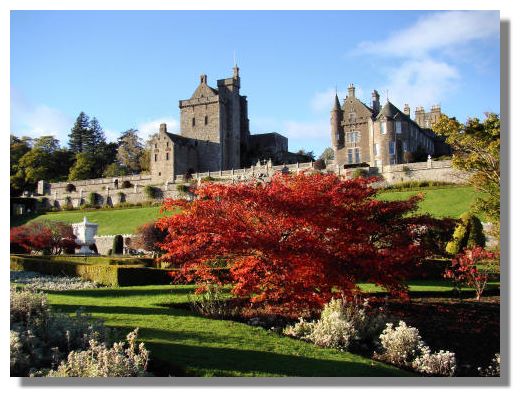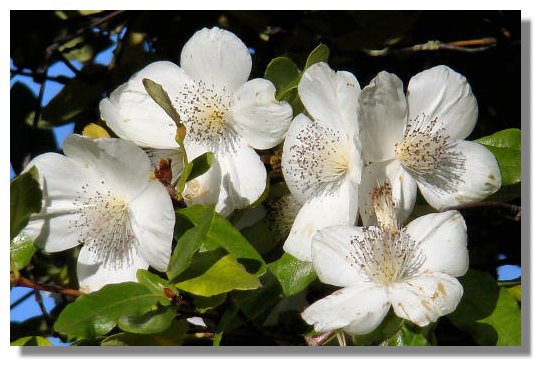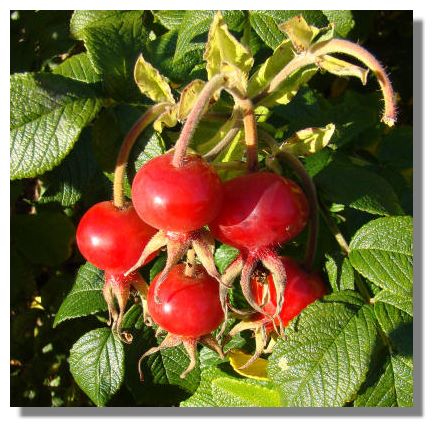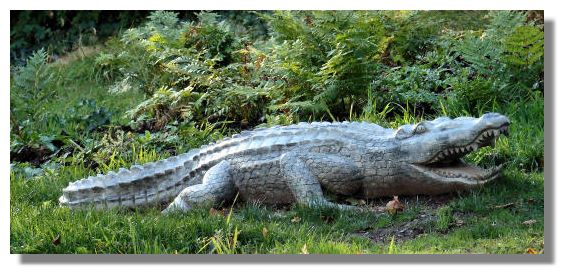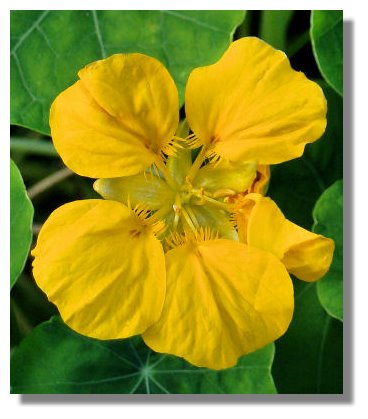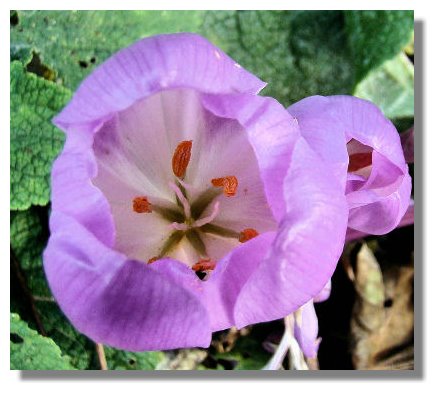Each week the Rampant Scotland Newsletter includes a number of photographs which illustrate the weather and the seasons, plus the flora and fauna of the current week around Scotland. This separate "colour supplement" displays some more pictures, in a larger format. Here is this week's crop of Scottish views!
Just as the summer flowers are fading, the formal garden in front of Drummond Castle in Perthshire bursts into colour again with the autumn leaves of fiery acer trees.
Eucryphia originated in Chile and Australia, which may explain why their flowers appear in the late autumn in Scotland. Some varieties of Eucryphia can grow into tall trees and their mass of brilliant white petals shine out at a time when the leaves of many trees around them are turning brown.
The hips of Rosa Rugosa can be large, 2–3 cm (over an inch) in diameter. They are often shorter than their diameter, not elongated like most other rose hips. Even in the middle of October, there can still be flowers of Rosa Rugosa in bloom beside the hips.
Crocodiles are not the first thing you associate with Drummond Castle. Admittedly there are a lot of sculptures in the grounds - but mainly of Greek gods and goddesses or religious subjects. So it is quite a surprise for visitors who wander off round an ornamental pond to find this fearsome object snarling at them!
Nasturtium, (literally "nose-twister" or "nose-tweaker") is a genus of roughly 80 species of annual and perennial herbaceous flowering plants known as Tropaeolum ("Trophy"). Caterpillars of the Large White butterfly are particularly fond of eating Nasturtium leaves. They have showy, often intensely bright flowers which are edible and can be added to salads, creating an ornamental effect and they add a slightly peppery taste, similar to watercress.
For obvious reasons, Colchicum are often referred to as "Autumn Crocus". Its purple, pink or white flowers appear from September to October. Its dark green leaves are only produced after flowering - hence its other common name of "naked lady".
If you want to look back at earlier editions of this Colour Supplement, there is an Index Page
